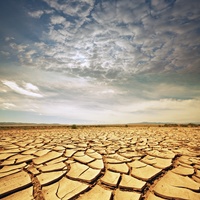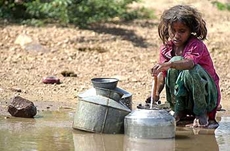Water-stressed globe to face increased thirst: study
06 Nov 2013
By the end of the century, an increased demand for fresh water will hit certain regions harder than others, according to new research at Pacific Northwest National Laboratory.
 | |
| To address the impact of climate change on water's availability, this study indicates the increasing importance of water conservation technologies and strategies, especially in already water-stressed global regions. |
Projections analysed by the team show that the Middle East and India, already dealing with water scarcity, will face even more water stress.
Including sectoral water requirements for the first time in a prominent, complex model specifically designed to link economic, energy, land-use and climate systems, the researchers showed future fresh water requirements from the energy, agricultural and municipal sectors of the economy. The study indicates that water conservation technologies and practices likely will have an increasingly important and unavoidable role in water-use planning.
Why It Matters:
Water, food, air - three essentials all humans need to survive. Fresh water, and plenty of it, for whatever purposes humans require always has been an imperative.
Understanding how this vital resource may be affected by future climate change, taking into account complex technology, energy, climate and human-use issues, has never been more important.
In this study, researchers showed how historical assessments of water requirements that assumed water scarcity would not restrict climate change mitigation or adaptation policies likely are off base. Instead, their study shows that water availability will increasingly be stressed as the climate changes, especially in already-dry regions. If society is going to address the impacts of climate change, gathering solid projections of possible futures is essential.
 | |
| Projected water scarcity due to changing water demand is shown in years 2005, 2050, and 2095 in the 14 GCAM regions. Total water supply (renewable water + desalinated water) is assumed fixed to 2005 levels to capture the effect of demand projection alone on water scarcity. (The error-bars represent the range of values based on the six socioeconomic scenarios; WSI values above 0.4 are considered severely stressed regions.) Reprinted from the referenced publication with permission of Elsevier. |
Scientists working at the Joint Global Change Research Institute (JGCRI), a partnership between Pacific Northwest National Laboratory and the University of Maryland, used the Global Change Assessment Model (GCAM) to run global projections of water demand and use through the end of the century.
GCAM, developed at PNNL with support from the US Department of Energy (DOE), is an integrated assessment model (IAM) that performs complex and detailed projections of future climate states.
The team assessed future water demands in the agricultural, energy, industrial and municipal sectors within GCAM.
They assigned base-year water requirements to specific activities to maximise consistency between bottom-up estimates of water demand intensities of specific technologies and practices and top-down regional and sectoral estimates of water use. They represented these scenarios through 14 geopolitical regions with the agricultural sector further divided into as many as 18 agro-ecological zones within each region.
Three sets of factors are important for understanding future socioeconomic challenges to mitigation and adaptation:
- Population and demographic conditions
- Socioeconomic development trajectory, measured by the United Nations Millennium Development Goals (MDGs)
- Technology used in producing and consuming energy, agriculture and other goods and services.
Considering these factors, the research established six future scenarios. Within these six storylines, the team identified two broad descriptors:
- either progress develops ahead of or copes with rising populations or
- the objectives described in the UN MDGs are not achieved and the proportion and number of the extremely poor increases.
For each group, the researchers explored the implications of these sets of futures and their associated trends in domestic governance, international relations, population patterns and environmental conditions.
Their goal was to examine the demands on water and other resources, as well as the human, financial and environmental capacity to meet them.
The Integrated Assessment Research Program (IARP) in the US Department of Energy's Office of Science supported this research.







.webp)














